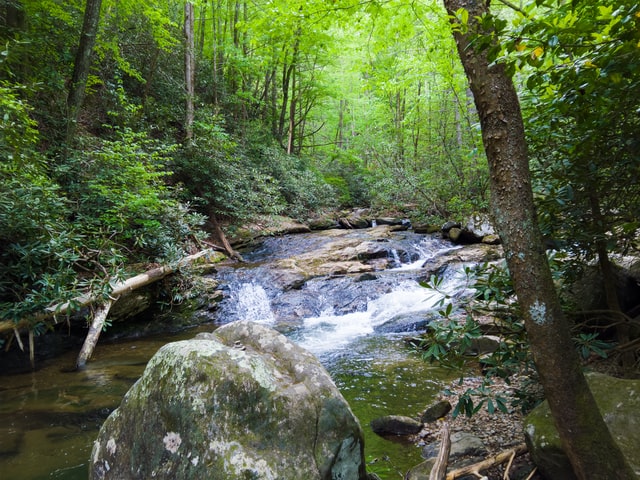Our Mission & Vision
Mission
- To adopt more sustainable and socially equitable patterns of land use.
- To preserve, expand, and restore natural habitat and open space in the region.
- To ensure adequate location and variety of parklands providing equitable access and appropriate recreational uses in the region.
- To protect and enhance regional water quality while advancing a resilient, multi-benefit, low carbon water supply.
- To reeduce greenhouse gas emissions and other pollutants through enforceable measures consistent with state laws and executive orders.
- To create good, middle-class jobs, especially in vulnerable neighborhoods, and support the collective bargaining rights of workers.
- To expand and preserve affordable housing and homeownership, particularly near transit and job centers.
- To pursue transportation justice, which is the right of every person to a safe, accessible, affordable, effective, and healthy transportation network.
How do we get there?
Preserve Biodiversity, Natural Habitat, and Provide Parks and Open Space
- Complete, strengthen, manage, and fully fund regional multi-species habitat conservation plans, critical land acquisitions, and land management.
- Preserve, restore, and manage natural habitat and other ecologically sensitive lands not covered by regional multi-species conservation plans including: urban canyons, waterways, waterbodies, ecological linkages, and ecologically important greenfields.
- Direct development away from remote or rural natural lands and into existing developed communities and urban areas.
- Ensure establishment and funding of adequate parks, trails, and appropriate recreational areas and provide equitable access.
- Ensure land dedicated to habitat preservation is protected and managed for that ecological benefit.
- Ensure adequate green spaces and parks in communities where green infrastructure has not been provided.
- Provide the benefits of open space, habitat conservation and ecosystem services among all residents of the region and engage everyone in experiencing, responsible use and appreciation of these places.
Protect and Enhance Regional Water Quality While Advancing a Resilient, Multi-Benefit, Low Carbon Water Supply
- Identify, secure, and allocate funding for green storm water and wastewater infrastructure improvements and maintenance to meet water quality standards, address source control, and prevent trash and pollution from entering storm drains, watersheds, and the ocean.
- Fund, develop, and implement integrated water management and multi-benefit infrastructure projects that capture, infiltrate, reuse storm water, and recycle wastewater to support a local sustainable water supply while improving human and environmental health.
- Prioritize green infrastructure and multi-benefit projects that maximize co-benefits to disadvantaged communities and promote equity. Examples include green spaces in park poor areas that serve to attenuate flooding while infiltrating stormwater or capturing and delivering it for treatment and reuse.
Ensure Meaningful Action on the Crisis of Climate Change
- Establish a regional pathway and implementation strategy to reach zero emissions, in line with state targets and scientific consensus about what it will take to limit warming to 1.5 degrees Celsius.
- Ensure a just transition for workers and frontline communities.
- Secure adoption and implementation of Climate Action Plans, in San Diego County and each city in the county, with enforceable GHG reduction measures and targets aligned with state laws and Executive Orders.
- Ensure that local and regional land use and transportation policies and plans are aligned with local, regional, and state climate targets.
Invest in Social, Economic and Environmental Equity
- Dedicate majority of funding to communities identified as most disadvantaged. For this purpose, disadvantaged communities are defined as the 25% of San Diego County’s 628 census tracts that rank highest within the region on the most current version of CalEnviroScreen.
- Provide training and work opportunities for County residents through a Project Labor Agreement with three key provisions: 1) participation in state-approved joint labor-management apprenticeship; 2) local hire with enforceable standards targeting vulnerable communities and populations, like veterans; and 3) labor peace.
- Reduce the percentage of family income spent on the combined cost of housing and transportation with an emphasis in those communities where the percentages are highest.
Preserve, Expand, and Increase the Accessibility of Affordable Housing
- Focus the region’s limited resources on meeting the most-pressing housing needs.
- Require any new residential developments to include onsite inclusionary housing or a minimum of one to one unit for offsite.
- Support the creation of jobs paying family-supporting wages and require at minimum that all residential construction projects pay a prevailing wage or include a project labor agreement where the workforce will be local, skilled and trained.
- Ensure existing residents can remain in their communities and support tenant protections that help ensure safe and affordable housing and protects residents from discriminatory practices.
- Support infill development and the building of affordable housing near transit.
Develop Viable, Equitable, and Sustainable Transit, Bike, and Pedestrian Networks
- Create a safe, accessible, effective mass transit, biking, and walking network that offers viable alternatives to traveling by car and prioritizes projects in disadvantaged communities.
- With the help of world-class experts, develop planning strategies, policies, and investments that facilitate access for everyone to use state of the art transportation networks that integrate biking, walking, and mass transit options.
- Offer frequent transit service that is convenient and competitive with vehicle travel, with real-time information, safe shelters, safe bike/walk routes to transit, 24-hour transportation options, and connections from transit to affordable housing, jobs, and major community destinations.
- Ensure that overburdened communities do not bear excessive external costs such as pollution, accident risk, and financial costs.
- In order to meet or exceed state and local climate targets, fund and prioritize new construction, operations and maintenance of transit, biking, and walking projects on accelerated timelines before any new roadway expansions.
- Support meaningful public participation by ensuring that the concerns of residents are identified and addressed in the development of policies, programs, and projects proposed for each neighborhood.
- Ensure that construction, maintenance, and operation of the transportation network creates good, middle-class jobs through collective bargaining, especially in vulnerable neighborhoods.
- Make biking and walking an integral part of the transportation system by providing secure bike parking at transit hubs and improving capacity for taking bikes on transit.
What Our Members are Saying
Why We Must Drive Less
It would be really nice if the solution to the biggest challenge in human history was to switch to electric vehicles. Unfortunately, given the best available data, it is clear that the switch can’t happen fast enough to prevent a climate catastrophe.
We don’t have time to wait for technology to catch up and reduce the impact of driving enough to make it the main mode of transportation for San Diegans. We need to stop driving now, by whatever means possible.
Road Use Charges Are Coming for You
“Road user charges are the most viable and sustainable long-term ‘user pay’ option for the federal government to both raise adequate and appropriate revenues and provide the federal share of funding for the nation’s surface transportation system.”
Regional Plan Draft Environmental Impact Report Out for Review
Draft Environmental Impact Report (DEIR) for the 2021 Regional Plan As part of the development of the 2021 Regional Plan, The San Diego Association of Governments (SANDAG), as lead agency under the California Environmental Quality Act, has prepared a Draft...
Analyzing the 2021 Regional Plan
On May 28, SANDAG released the Draft 2021 Regional Plan, including the Draft Air Quality Conformity analysis and the Sustainable Communities Strategy (SCS) for public comment on May 28, 2021. The closing date for public comments is August 6, 2021. A response to each...
Turning Stormwater into an Asset
San Diegans love their beaches and bays. Most days you can see people playing in the water in many ways – swimming, surfing, snorkeling, diving, fishing, and more. But for 72 hours after it rains, it is another story. Closed beaches and empty lineups testify to the hazards of playing in polluted stormwater.
San Diego is on the Verge of Something Big
Millions of people call San Diego County home and for decades, the primary way most of us have moved around the region has been driving. That is about to change.
Stopping Sprawl Development – SB 743 Explained
A recurring theme in environmental activism in the San Diego Region has been the effort to prevent sprawl development in the rural part of the county. This has taken on a new urgency in recent years, as catastrophic wildfires have become more frequent, and the reality of climate disruption has begun to sink in.
SANDAG Released SB 743 VMT Maps
SANDAG has released the SB 743 VMT maps for both Series 14 and the historical Series 13.SANDAG has released the SB 743 VMT maps for both Series 14 and the historical Series 13....
SANDAG has rolled out the Climate Action Data Portal
SANDAG has rolled out the Climate Action Data PortalThe Climate Action Data Portal is an online resource for climate planning data for the San Diego region. Its purpose is to provide easily accessible, best available data to assist local jurisdictions in climate...














